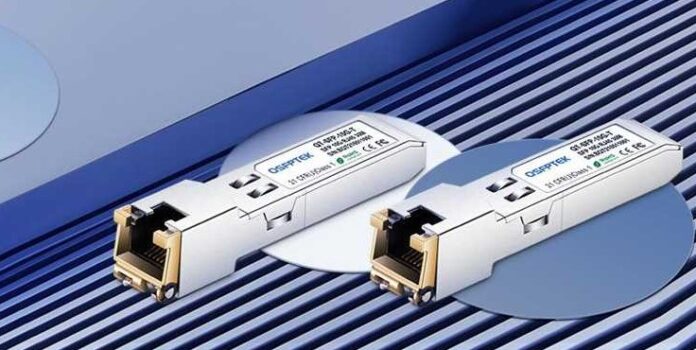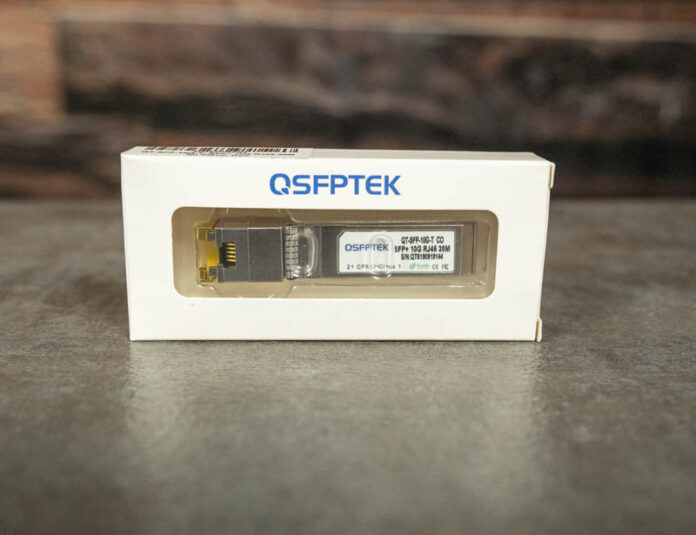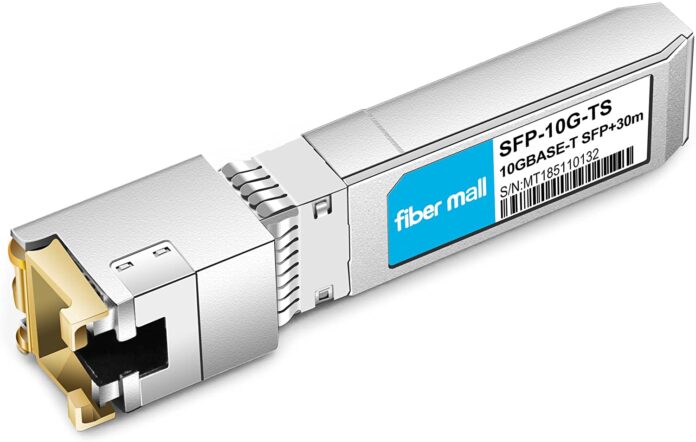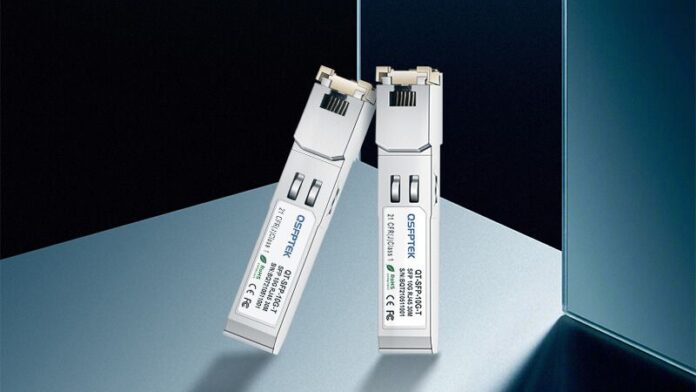In the LAN (local area network) where data communication is widely popularized, the new specification with 10 times the speed of the current mainstream specification 1000BASE-T is 10GBASE-T. due to the business uses such as data center and large enterprise network using optical fiber cable, the cost required for introduction is very expensive. It is expected that 10GBASE-T, which also supports RJ45 port, will be popularized in the future compared with previous LAN cables. 10GBASE-T can greatly improve the efficiency of data transmission by shortening the transmission time. The technical innovations of 10GBASE-T will be introduced in detail below.
What is 10GBASE-T Technology

10GBASE-T is an Ethernet specification using copper cable connection (category 6 shielded or unshielded twisted pair), the effective bandwidth of the data layer is 10Gbit/s, and the longest transmission distance can reach 100 meters. The IEEE standard corresponding to 10GBASE-T is 802.3an-2006. Due to its lower cost and convenient plug-and-play characteristics, UTP copper cable can still be used as an alternative medium for lateral cabling in buildings and data center cabling. Although not specifically stated in the standard, Category 5e channels can still support 10GBASE-T operation. In Category 6 links, the transmission distance supported by the standard is increased from 55 meters to 100 meters. In addition, the cable industry has defined a new transmission medium standard, introducing the enhanced Category 6 Category 6a standard, under which 10GBASE-T can support transmission distances up to 100 meters. Because 10GBASE-T can operate on existing or newly installed UTP copper cables, it maintains the plug-and-play convenience and low cost of UTP cabling. The 10GBASE-T standard enables network administrators to extend the network to 10Gb while maintaining the existing copper cable infrastructure, and new users can also take advantage of the cost-effective features of copper-structured cables.
10GBASE-T PHY Chip Technology

The PHY chip selected for QSFP TEK 10GBASE-T modules can bring breakthrough advantages to switch, server and storage customers. Significant advantages include low latency, low operating power consumption, high noise immunity, and advanced power management features such as support for Energy Efficient Ethernet standards. It consumes 2.5 watts per port at a distance of 100 meters, making it ideal for high-density applications. In addition, the PHY chip enables 10GBASE-T applications to achieve lower power consumption and deployment costs, playing an important role in driving the adoption of 10GBASE-T devices.
10GBASE-T Multilevel Pulse Amplitude Modulation Technology
In the code modulation of the source, 10GE adopts PAM (Pulse Amplitude Modulation). That is, the amplitude of the pulse carrier changes with the baseband signal. In 1000BASE-T, the PAM5 coding modulation technology is used. The three consecutive symbols of the baseband are compiled into a PAM code. The transmitted symbols are not a single discrete 0 and 1, but are divided into 5 levels (-2, -1, 0, 1, 2), each symbol carries 2.32 bits of information, but in actual In the application, considering the factors of coding efficiency, error correction and synchronization code, the actual transmission is only 2bit/code, because it is necessary to transmit 250Mbit/s data in a pair of twisted pairs. So the symbol rate is 125M/S. If the same coding method is used in 10GBASE-T, the symbol rate is at least 1250 M/S. According to the Nyquist criterion, in a noise-free channel with limited bandwidth, the reliable transmission bandwidth of the system is at least half of the symbol rate. That is 625M, but the maximum transmission bandwidth of Category 6A twisted pairs is only 500M. Under the balance of cost and performance, 10 Gigabit Ethernet adopts a higher 16-level pulse amplitude modulation – PAMl6. The 4 consecutive baseband symbols are compiled into a PAM code. It has 16 symbols (-15, -13, -11, -9, -7, -5, -3, -1, 1, 3, 5, 7, 9, 11, 13, 15). Let each symbol carry more information – 4bit/symbol (the actual amount of information is 3.125bit/symbol), so on the premise that the total transmission rate remains unchanged, the symbol rate can be reduced to 800M /S, thereby reducing the minimum bandwidth required by the system. In 16 PAM, the minimum bandwidth required by the system is only 400M, but the price paid by multi-level pulse modulation is that a more powerful processor is required for codec processing.
10GBASE-T Noise Cancellation Technology
In data transmission, interference can be divided into internal and external interference, of which internal interference can be roughly divided into: near-end crosstalk, far-end crosstalk, echo interference and interference between adjacent signals. The interference caused by the signal transmitted by the transmitter at a certain time can be eliminated at the receiving end according to the characteristics of the noise. The average gain of the two kinds of noise elimination is 45dB. Far-end crosstalk can be eliminated by the difference between the time delay of the transmitted signal and the strength of the received signal, and the elimination gain is about 20dB. Using THP precoding at the 10GBASE-T transmission end can eliminate the interference between adjacent signals. With the development of DSP technology, internal interference is no longer the main factor that interferes with information transmission. Interference between cables and background noise, because the specific characteristics of the interference noise are unknown, the DSP cannot handle it, so external interference is the main factor limiting the speed of Ethernet.
Conclusion

The 10GBASE-T adapter has become the standard configuration of server equipment. In the field of server and storage, 10 Gigabit Ethernet has become the development trend. Overall, 10 Gigabit copper cable has the advantages of low price, good compatibility and simple construction. 10GBASE-T’s share will continue to grow this year. It is the device that users will quickly deploy next, and will eventually become the main media option. The PHY chip selected for QSFP TEK 10GBASE-T modules can bring breakthrough advantages to switch, server and storage customers. Click here to get 10GBASE-T module price.









